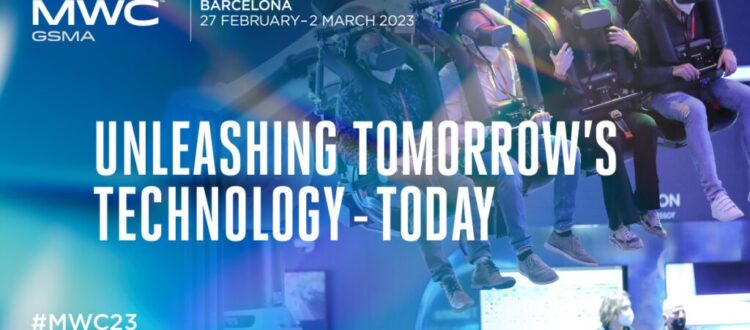Mobile World Congress 2023 Tech Highlights for Retail Industry
The Mobile World Congress (MWC) is biggest trade show for the mobile industry. The event showcase the latest technological advancements and provide a platform for companies to network, exhibit their products and services, and announce new partnerships and collaborations. In this article, we will discuss some of the highlights from these two events that are relevant to the retail industry.
The MWC is a global event that focuses on the mobile and wireless industry. It is held annually in Barcelona, Spain, and attracts participants from all over the world. The following are some of the highlights of the MWC 2023 for retailers:
-
- As the world becomes increasingly dependent on technology, the demand for faster, more efficient networks has grown exponentially. This has led to the development of 5G, the fifth generation of wireless technology, which has already revolutionized the way we communicate and access information.But as technology continues to evolve at an unprecedented pace, the focus has already shifted to the next big thing: 6G. While 5G is still in its infancy and yet to be fully implemented globally, research into 6G has already begun, with some experts predicting that it could become a reality by 2030.So, what exactly is 6G, and how does it differ from its predecessor?6G is the sixth generation of wireless technology that will follow 5G. While 5G promises to deliver faster speeds, lower latency, and more reliable connectivity, 6G is expected to take things to the next level.
One of the most significant differences between 6G and 5G is the speed. While 5G promises to deliver speeds of up to 10 Gbps, 6G could potentially offer speeds of up to 1 terabit per second (Tbps), which is 100 times faster than 5G.
Another key difference between the two is latency. 5G promises to deliver ultra-low latency of less than a millisecond, which is ideal for applications such as online gaming and virtual reality. However, 6G is expected to deliver even lower latency, which will enable applications that require real-time responsiveness, such as remote surgery and autonomous vehicles.
In addition to speed and latency, 6G is also expected to offer higher reliability, improved coverage, and greater energy efficiency than its predecessor. This will be achieved through the use of advanced technologies such as terahertz (THz) communication, which will enable the use of previously untapped frequencies for wireless communication.
While it is still too early to predict exactly what 6G will look like or how it will be implemented, one thing is certain: it will be a game-changer. From smart cities to the Internet of Things (IoT) and beyond, 6G has the potential to transform the way we live, work, and communicate. As we continue to push the boundaries of technology, the future of wireless communication looks brighter than ever.
One of the most significant developments showcased at the MWC was the progress made in 6G technology. Several companies unveiled new products and services that utilize the high-speed and low-latency network to enable a range of new applications for retail, such as augmented reality shopping experiences and mobile payments.
- As the world becomes increasingly dependent on technology, the demand for faster, more efficient networks has grown exponentially. This has led to the development of 5G, the fifth generation of wireless technology, which has already revolutionized the way we communicate and access information.But as technology continues to evolve at an unprecedented pace, the focus has already shifted to the next big thing: 6G. While 5G is still in its infancy and yet to be fully implemented globally, research into 6G has already begun, with some experts predicting that it could become a reality by 2030.So, what exactly is 6G, and how does it differ from its predecessor?6G is the sixth generation of wireless technology that will follow 5G. While 5G promises to deliver faster speeds, lower latency, and more reliable connectivity, 6G is expected to take things to the next level.
- AI for retail is one area that is likely to be featured at MWC, as AI has the potential to transform the retail industry by improving customer experience, increasing efficiency, and reducing costs.Some of the ways AI is being used in retail include:
- Personalized recommendations: AI algorithms can analyze customer data to provide personalized product recommendations, increasing the likelihood of a purchase.
- Predictive inventory management: AI can analyze data on customer buying patterns and external factors such as weather to optimize inventory management, reducing waste and ensuring products are always in stock.
- Fraud detection: AI can be used to identify fraudulent activity in real-time, such as fraudulent transactions or fake reviews.
- Chatbots: AI-powered chatbots can provide customers with 24/7 support, answering common questions and resolving issues quickly.At MWC, we may see companies showcasing their AI solutions for retail, demonstrating how they can help retailers improve their operations and provide a better customer experience. We may also see discussions around the ethical and privacy implications of using AI in retail, as well as the challenges of implementing AI in an industry that traditionally relies on human intuition and experience.
- At the Mobile World Congress, IoT (Internet of Things) for retail has been a popular topic in recent years. IoT technology can offer retailers a range of benefits, including real-time data insights, better inventory management, personalized customer experiences, and improved operational efficiency.One of the key areas where IoT is being applied in retail is in-store customer experience. Retailers are using IoT sensors to track customer behavior, such as how they move through the store, what products they interact with, and what they ultimately purchase. This data can be used to optimize store layout, product placement, and marketing campaigns to enhance the customer experience.IoT is also being used to improve inventory management, which is a critical challenge for many retailers. Retailers can use IoT sensors to monitor inventory levels in real-time and automatically trigger reordering when stock levels run low. This helps to reduce the risk of stockouts and overstocking, which can lead to lost sales and wasted resources.
Another area where IoT is being applied in retail is in supply chain management. IoT sensors can be used to track the movement of goods from the manufacturer to the store, providing retailers with real-time visibility into the status of their shipments. This can help retailers to optimize their supply chain operations and improve the speed and efficiency of their deliveries.
Overall, IoT technology has the potential to transform the retail industry, helping retailers to improve the customer experience, optimize their operations, and ultimately drive sales and revenue growth.
- Augmented reality (AR) can be a powerful tool for various of services like indoor navigation. By overlaying digital information onto the real-world environment, AR can provide users with a more intuitive and engaging navigation experience.One of the key advantages of AR for indoor navigation is that it can help users orient themselves in complex or unfamiliar environments. For example, an AR app could overlay directional arrows onto the floor or walls of a building, making it easier for users to find their way around. AR can also provide users with additional context about their surroundings, such as information about nearby points of interest or safety hazards.
Another benefit of AR for indoor navigation is that it can be used to enhance wayfinding for people with disabilities. For example, an AR app could provide audio or visual cues to guide users with visual impairments through a building, or provide haptic feedback to help users with mobility impairments navigate stairs or other obstacles.
There are already several AR indoor navigation apps available on the market, and the technology is expected to continue to evolve and improve in the coming years. As more buildings and public spaces become equipped with location-tracking technology, we can expect to see even more innovative uses of AR for indoor navigation.


